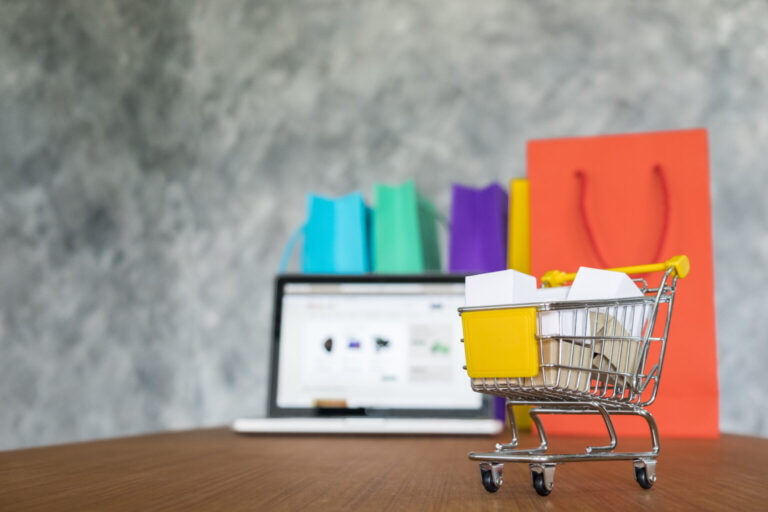Discover proven strategies to increase average order value (AOV) in e-commerce. Learn effective techniques to boost sales, enhance customer satisfaction, and drive revenue growth.
Introduction
Increasing the average order value (AOV) is a key objective for any e-commerce business aiming to boost revenue without significantly raising customer acquisition costs. AOV is the average amount a customer spends per transaction, and enhancing it can lead to higher profits and a better bottom line. This article explores various strategies to effectively increase AOV, from upselling and cross-selling to creating compelling offers and enhancing the overall customer experience.
Understanding Average Order Value (AOV)
Definition and Importance
Average order value (AOV) is calculated by dividing the total revenue by the number of orders over a specific period. It indicates the average amount spent by customers per transaction and is crucial for assessing the effectiveness of sales strategies.
Factors Influencing AOV
Several factors can influence AOV, including:
- Product Pricing: Higher-priced items naturally increase AOV.
- Customer Demographics: Different customer segments may have varying spending capacities.
- Product Mix: Offering complementary products can encourage higher spend per order.
- Promotions and Discounts: Strategic promotions can incentivize larger purchases.
Effective Upselling Techniques
Bundling Products
Product bundling involves offering related products together at a discounted price. This technique encourages customers to purchase more items, increasing the overall transaction value. For example:
- Create Themed Bundles: Combine products that are often used together, such as a camera with accessories.
- Offer Savings: Highlight the cost savings compared to purchasing items separately.
Offering Premium Versions
Upselling to premium versions of products can boost AOV. Present customers with options to upgrade to a higher-tier product or add extra features for a small additional cost. For instance:
- Showcase Benefits: Clearly present the advantages of the premium version, such as better performance or extended warranty.
- Price Differentiation: Ensure the price difference between standard and premium versions is justifiable and attractive.
Cross-Selling Strategies
Related Product Recommendations
Cross-selling involves suggesting complementary products that enhance the primary purchase. Implement this strategy by:
- Using Data Analytics: Analyze past purchase data to recommend products frequently bought together.
- Personalized Recommendations: Display suggestions based on the customer’s browsing history and preferences. Unlock the Power of AI-Driven Personalization
Frequently Bought Together
Feature products that are commonly purchased together on product pages and during checkout. This strategy can encourage customers to add more items to their cart. Examples include:
- Bundle Suggestions: Automatically suggest bundles based on the selected product.
- Discount Incentives: Offer discounts on related items when purchased together.
Creating Compelling Offers and Discounts
Volume Discounts
Encourage customers to buy more by offering discounts based on the quantity purchased. For example:
- Bulk Pricing: Provide lower prices for buying multiple units of the same item.
- Tiered Discounts: Offer increasing discounts for higher quantities.
Time-Limited Promotions
Create urgency with time-limited offers that encourage immediate purchases. Examples include:
- Flash Sales: Short-term discounts on popular items.
- Countdown Timers: Display timers to highlight limited-time offers.
Implementing Loyalty Programs
Rewards for Higher Spend
Loyalty programs can motivate customers to increase their order value to earn rewards. Effective tactics include:
- Points-Based Systems: Offer points for every dollar spent, which can be redeemed for discounts or free products.
- Exclusive Rewards: Provide special rewards for reaching specific spending thresholds.
Tiered Loyalty Levels
Introduce tiered loyalty levels to encourage higher spending. Each tier can offer increasing benefits, such as:
- Free Shipping: Offer free shipping for higher loyalty tiers.
- Exclusive Access: Provide early access to new products or special sales for top-tier members.
Optimizing Pricing Strategies
Dynamic Pricing
Implement dynamic pricing strategies that adjust prices based on demand, inventory levels, and customer behavior. Benefits include:
- Increased Profitability: Maximize revenue by pricing products according to market conditions.
- Competitive Advantage: Stay competitive by adjusting prices in real-time.
Psychological Pricing Techniques
Use psychological pricing to encourage higher spending. Examples include:
- Charm Pricing: Set prices ending in .99 to make products appear cheaper.
- Anchor Pricing: Display higher-priced items alongside lower-priced options to make the latter seem more affordable.
Enhancing Product Presentation
High-Quality Images
Invest in high-quality images that showcase your products from multiple angles. Effective product photography can increase perceived value and encourage higher spending. Tips include:
- Professional Photos: Use professional photography to highlight product details.
- Lifestyle Images: Include images showing the product in use to help customers envision ownership.
Detailed Descriptions
Provide detailed product descriptions that highlight features, benefits, and usage scenarios. Effective descriptions can persuade customers to add more items to their cart. Ensure:
- Clarity: Use clear, concise language to explain product benefits.
- SEO Optimization: Include relevant keywords to improve searchability.
Personalizing the Shopping Experience
Customized Recommendations
Use customer data to offer personalized product recommendations throughout the shopping journey. Techniques include:
- AI Algorithms: Implement AI-driven recommendation engines to suggest relevant products.
- Behavioral Data: Use browsing and purchase history to tailor recommendations.
Personalized Emails
Send personalized email campaigns that feature products and offers based on the recipient’s interests and past interactions. Strategies include:
- Dynamic Content: Use dynamic content blocks to tailor emails for each recipient.
- Segmented Lists: Segment your email list to send targeted offers and recommendations.
Leveraging Technology to Boost AOV
AI and Machine Learning
Utilize AI and machine learning to analyze customer behavior and optimize product recommendations. Benefits include:
- Enhanced Recommendations: AI can provide more accurate and relevant product suggestions.
- Predictive Analytics: Use AI to predict future buying behavior and adjust marketing strategies accordingly.
Elevate Your E-commerce with AI-Powered Product Recommendations
Chatbots and Virtual Assistants
Integrate chatbots and virtual assistants to provide real-time support and recommendations. Benefits include:
- Instant Assistance: Help customers find products and answer questions quickly.
- Upselling Opportunities: Use chatbots to suggest additional products based on customer queries.
Improving the Checkout Process
Simplified Checkout
Streamline the checkout process to reduce friction and increase conversion rates. Tips include:
- Minimal Steps: Reduce the number of steps required to complete a purchase.
- Guest Checkout: Allow customers to check out without creating an account.
Upsell and Cross-Sell at Checkout
Offer upsell and cross-sell opportunities during the checkout process. Strategies include:
- Complementary Products: Suggest products that complement items in the cart.
- Last-Minute Offers: Provide special deals or add-ons that can be included before completing the purchase.
Creating Value-Added Bundles
Curated Product Sets
Create curated product sets that offer value and convenience to customers. Examples include:
- Gift Sets: Bundle related products into a gift set for special occasions.
- Starter Kits: Offer bundles that include everything needed to get started with a product.
Special Bundle Pricing
Offer special pricing for product bundles to encourage larger purchases. Benefits include:
- Perceived Value: Customers perceive they are getting more value for their money.
- Higher Sales: Bundles can increase sales volume and AOV.
Offering Free Shipping Thresholds
Minimum Spend Requirements
Encourage customers to spend more to qualify for free shipping. Strategies include:
- Threshold Incentives: Set a minimum order value for free shipping.
- Visible Reminders: Display reminders of how much more needs to be spent to qualify for free shipping.
Limited Time Free Shipping
Create urgency with limited-time free shipping offers. Examples include:
- Holiday Promotions: Offer free shipping during holiday seasons or special events.
- Flash Free Shipping: Provide free shipping for a limited period to boost sales.
Enhancing Mobile Shopping Experience
Mobile-Optimized Design
Ensure your website is optimized for mobile devices to provide a seamless shopping experience. Tips include:
- Responsive Design: Use responsive design to adapt to different screen sizes.
- Fast Loading: Optimize loading times to prevent drop-offs.
Mobile-Specific Offers
Create offers and promotions tailored to mobile users. Examples include:
- App-Only Discounts: Provide special discounts for purchases made through your mobile app.
- Mobile Flash Sales: Run flash sales that are exclusive to mobile shoppers.
Utilizing Customer Reviews and Social Proof
Highlighting Positive Reviews
Display positive customer reviews and testimonials prominently on product pages. Benefits include:
- Increased Trust: Positive reviews build trust and credibility.
- Influence Purchases: Reviews can influence purchasing decisions and increase AOV.
User-Generated Content
Encourage customers to share their experiences with your products. Strategies include:
- Photo Reviews: Allow customers to upload photos with their reviews.
- Social Media Sharing: Promote user-generated content on social media to build community and trust.
Measuring and Analyzing AOV
Key Metrics to Track
Track essential metrics to evaluate the effectiveness of your strategies to increase AOV:
- Average Order Value: Monitor changes in AOV over time.
- Conversion Rate: Track the percentage of visitors who complete a purchase.
- Customer Lifetime Value: Measure the total revenue generated by a customer over their lifetime.
Analyzing Data for Insights
Analyze your data to gain insights into what drives higher AOV. Tips include:
- Customer Segmentation: Identify which customer segments have the highest AOV.
- Purchase Patterns: Analyze purchase patterns to understand what influences higher spending.
Future Trends in Increasing AOV
Emerging Technologies
Stay ahead by adopting emerging technologies that can enhance AOV:
- Augmented Reality (AR): Use AR to provide interactive product experiences that encourage higher spending.
- Voice Commerce: Integrate voice commerce to offer a new, convenient way for customers to make purchases.
Adapting to Consumer Behavior
Adapt to evolving consumer behavior to maintain effective strategies for increasing AOV:
- Sustainability: Offer eco-friendly products and practices to attract value-driven customers.
- Personalization: Continue to refine personalization techniques to meet changing customer expectations.
FAQs
What is average order value (AOV)?
AOV is the average amount a customer spends per transaction. It is calculated by dividing total revenue by the number of orders.
How can I increase my average order value?
Increase AOV through upselling, cross-selling, offering compelling discounts, implementing loyalty programs, and optimizing the checkout process.
Why is AOV important for e-commerce businesses?
A higher AOV increases revenue without significantly raising customer acquisition costs, leading to better profitability.
What are some effective upselling techniques?
Effective upselling techniques include offering premium versions of products, creating product bundles, and showcasing the benefits of higher-priced options.
How can I use personalization to boost AOV?
Use personalization to provide tailored product recommendations, send personalized emails, and create customized offers that resonate with individual customers.
What future trends should I watch for in increasing AOV?
Future trends include the adoption of emerging technologies like AR and voice commerce, as well as adapting to consumer preferences for sustainability and personalization.
Conclusion
Increasing average order value is essential for driving revenue growth and improving the profitability of your e-commerce business. By implementing effective strategies such as upselling, cross-selling, creating compelling offers, and personalizing the shopping experience, you can encourage customers to spend more per transaction. Embrace these techniques to boost your AOV, enhance customer satisfaction, and achieve long-term success in the competitive e-commerce landscape. Ready to Boost Your AOV with AI? Let’s Get Started!


